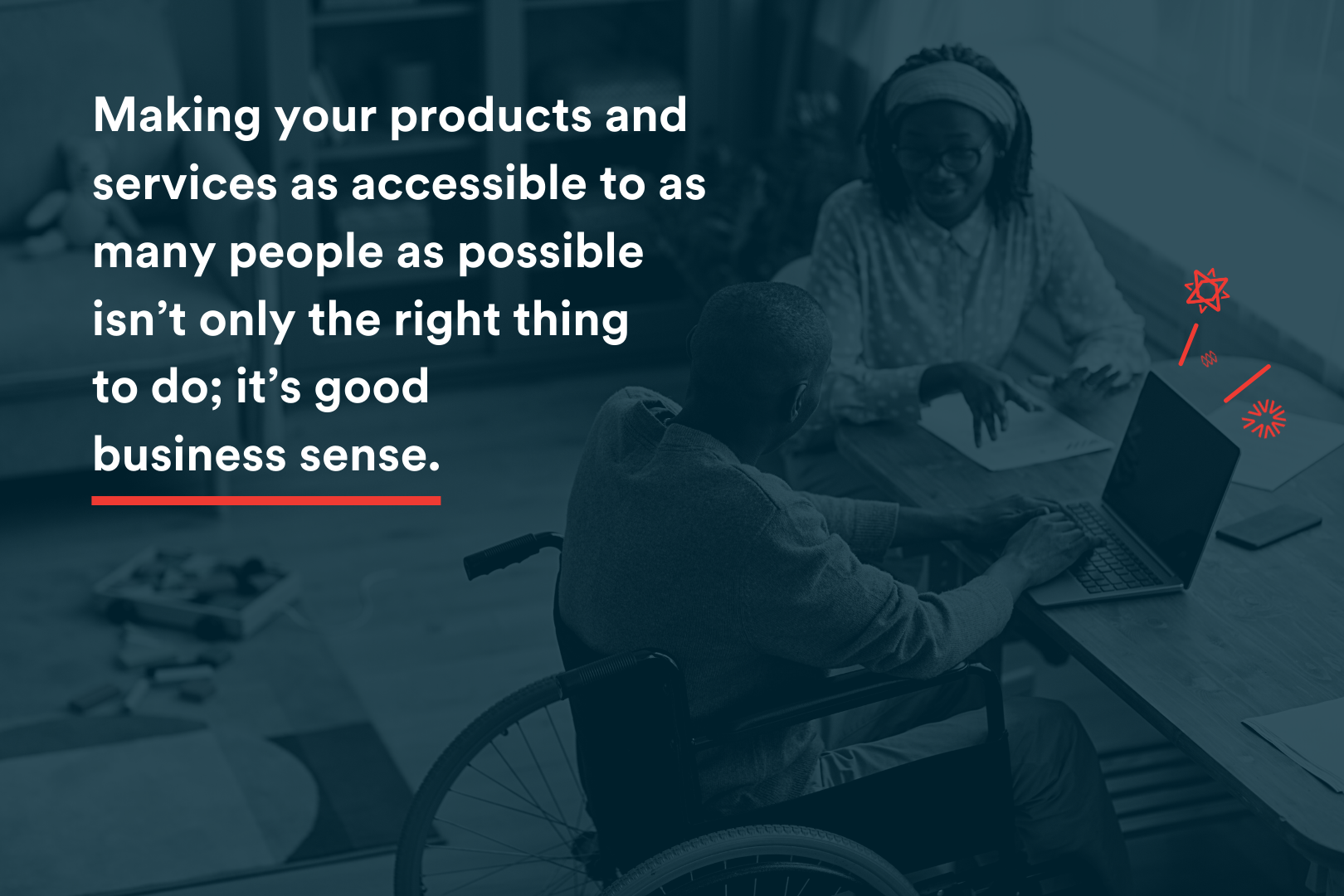User Experience | User Interface | accessibility
Making your products and services as accessible to as many people as possible isn’t only the right thing to do; it’s good business sense.
Too many companies continue to approach accessibility as an afterthought within the design of their websites and applications. This excludes many prospective members of the target audience who may have the intent to purchase a product or service but find it difficult to do so. It can frustrate current customers who feel they aren’t adequately able to use what they’ve invested their money in.
Making a website or application that’s accessible is crucial when designing your tech. But knowing how to evaluate your current efforts is somewhat tricky and can be even more difficult than starting from scratch.
Here are a few things you’ll want to consider.
Elements of Accessibility
If you’re looking for a great resource for determining whether your current offerings are accessible, or want a roadmap for including accessibility within a future product or user interface, look no further than the Web Accessibility Initiative’s (WAI) Introduction to Web Accessibility.
The first thing you likely want to know is: what exactly is accessibility? As WAI explains, “Web accessibility means that websites, tools, and technologies are designed and developed so that people with disabilities can use them.”
This can mean people with hearing impairment, visual impairment, cognitive disabilities, and more. Accessible applications also account for situational context.
Think about light mode versus dark mode on a computer. These might be used full-time, or they can be turned on and off at different times of the day depending on what kind of environment the individual is in when they engage with your content.
WAI’s introduction provides an overview of many high-level things you should focus on. These include such standout accessibility tactics as:
- Alt Text
Visually impaired individuals, or even persons with slower internet connections, rely on speech readers and/or written text to convey what is contained within an image. Therefore, a description of each image within the ‘alt-text’ section of your website or application can aid in understanding.
- Text-based Instructions
Understanding the purpose of alt-text, you can also see the potential dangers of an overreliance on graphics containing descriptions and instructions. Infographics and other highly designed charts may be aesthetically pleasing, but these should be paired with text instructions to ensure accessibility.
- Color Contrast
You may live and die by your highly marketable brand colors, but when combined in certain ways, the low contrast may make your webpages or applications difficult to read. Try to starkly contrast text on backgrounds throughout your interface or, at the very least, ensure your pages display properly when an individual uses the accessibility features of their browser.
- Transcripts
If you rely heavily on audio or video, a transcript should be available for those who prefer to or are required to engage in content in that way.
- Size
Make your imagery and text as large as possible to ensure the words and visuals on your pages can be seen and understood.
These are just the tip of the iceberg. WAI provides a far more comprehensive resource, so you should check it out at the links above to verify you’re doing what’s necessary to reach your audience and develop trust.

Where Should Accessibility Be Happening?
Is everywhere too broad of an answer?
The truth is, no matter your product, service, or the means of engaging with your brand, accessibility should be baked into the very fabric of your organization.
Typically, this means the following venues are among the places you’ll need to consider a more accessible layout:
- Desktop Browsers
For many companies, desktop browsers continue to be where much of an audience goes to purchase and/or interact with a brand. Your web interface should have accessibility baked in, using the best practices established above and many more.
Whether you’re tweaking your current desktop design or building a new one, this will be crucial for provide an optimal experience.
- Mobile Browsers
Then, of course, there are mobile browsers. Many companies continue to rely on the mistaken assumption that, if they design for desktop first, this will carry over to their mobile sites.
This simply isn’t the case anymore. Organizations must move toward a mobile-first design philosophy, and accessibility must be incorporated within that.
- Applications
You can’t spell app-cessibility without app.
Ensuring your applications are built with accessibility in mind is arguably more important even than it is with web or mobile applications. That’s because this is your own unique portal that your users and customers willingly enter, and that creates a certain level of trust you don’t want to break.
Depending on how your app functions, the responsibility for features like a light and dark mode might fall on you rather than a web browser that would come with such features installed.
Therefore, when developing apps, accessibility must be a cornerstone of your design philosophy.
- Hardware
Finally, while we’ve largely been focused on web accessibility, it’s also crucial that physical objects are accessible to the widest audience possible.
This is being taken more and more seriously among companies that previously may have left the development of accessibility-based products to third parties. Microsoft, for one, has made great strides in ensuring that its Xbox gaming products are playable by people whom could have been left behind in the past.
Accessible hardware is a win-win for both provider and user, no matter the industry. If you provide a physical product, your R & D should be focused on how design can be tweaked to accommodate individuals with unique means of interactivity.
Access Granted
Hopefully this has given you a good idea of what accessibility is and where you can begin to focus your development efforts to address it.
If you’d like more information on designing hardware and software that clears accessibility thresholds, contact Aviture. Our engineers and UX experts can consult on your products and ensure you’re serving the widest audience possible.





